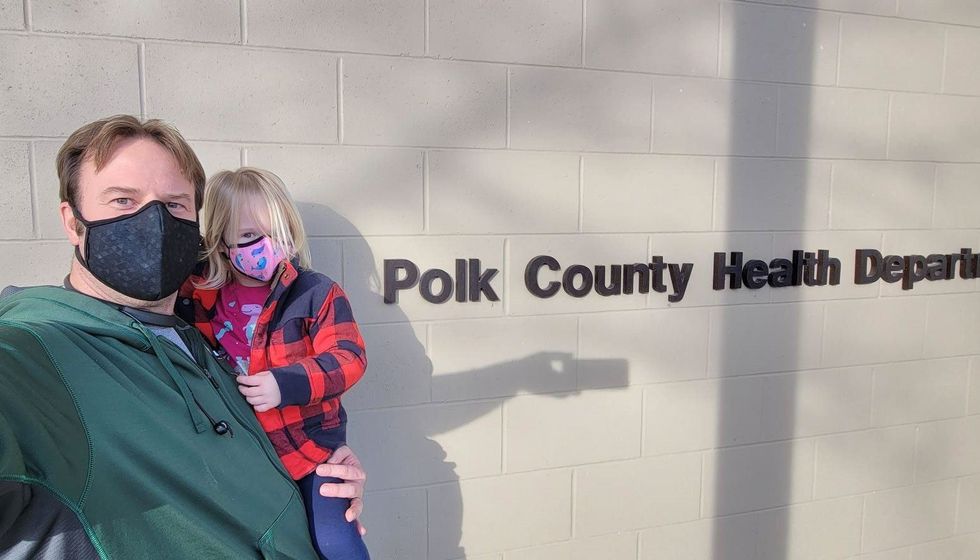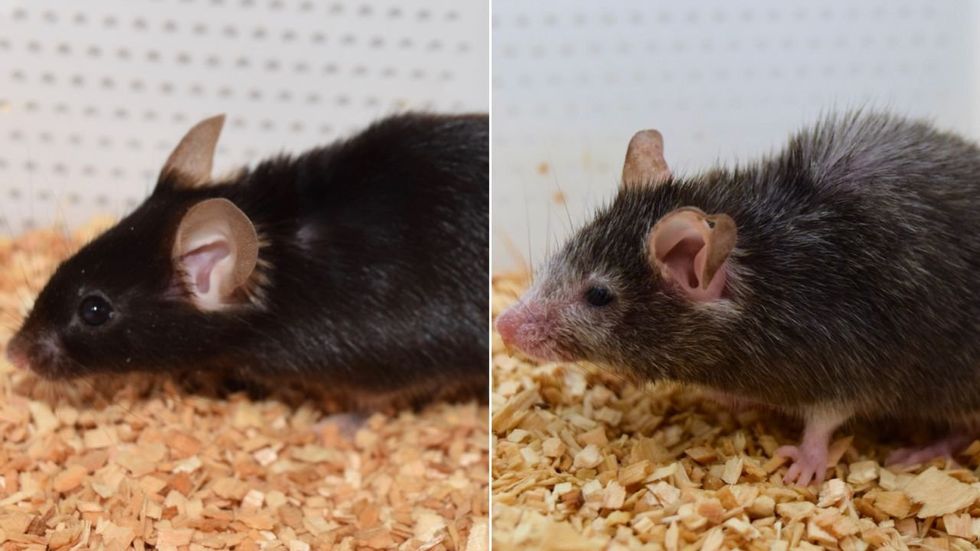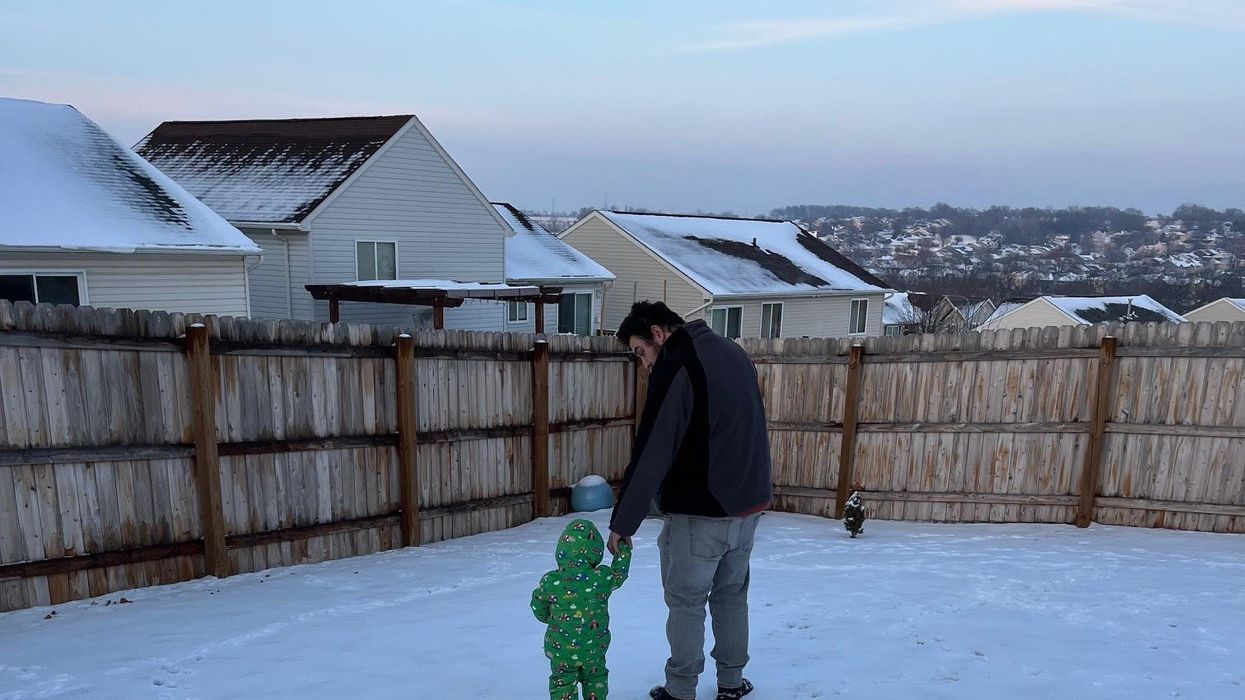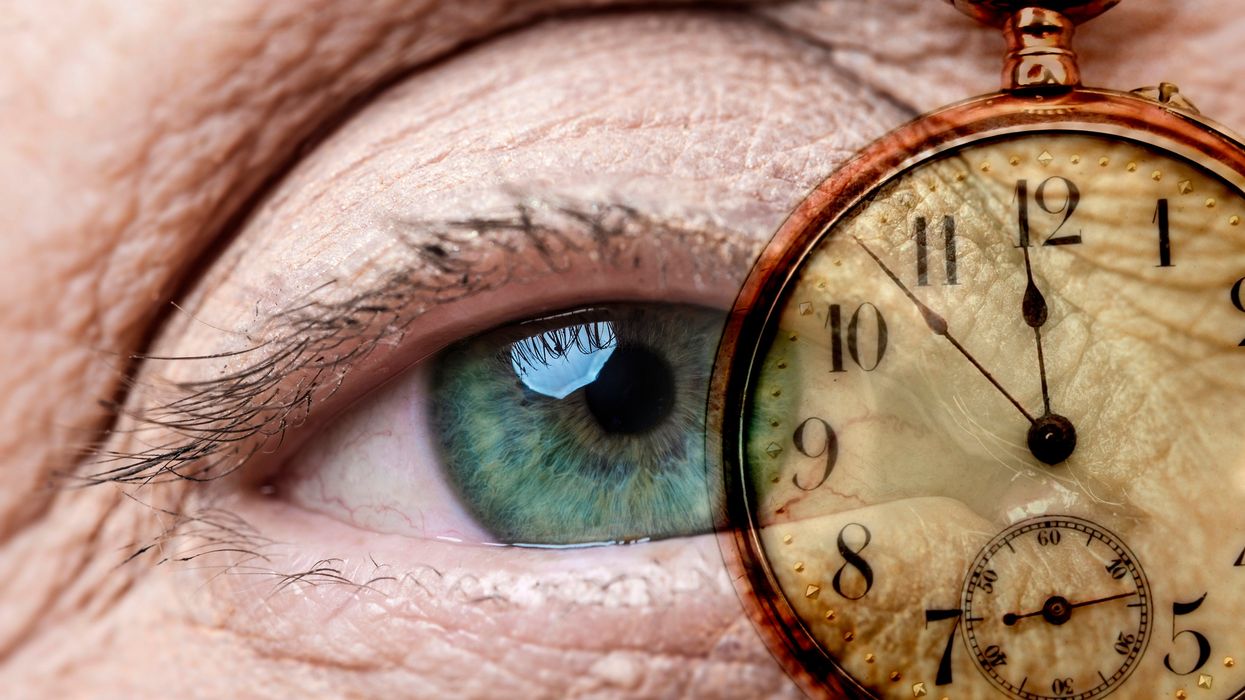Should Genetic Information About Mental Health Affect Civil Court Cases?

A rendering of DNA with a judge's gavel.
Imagine this scenario: A couple is involved in a heated custody dispute over their only child. As part of the effort to make the case of being a better guardian, one parent goes on a "genetic fishing expedition": this parent obtains a DNA sample from the other parent with the hope that such data will identify some genetic predisposition to a psychiatric condition (e.g., schizophrenia) and tilt the judge's custody decision in his or her favor.
As knowledge of psychiatric genetics is growing, it is likely to be introduced in civil cases, such as child custody disputes and education-related cases, raising a tangle of ethical and legal questions.
This is an example of how "behavioral genetic evidence" -- an umbrella term for information gathered from family history and genetic testing about pathological behaviors, including psychiatric conditions—may in the future be brought by litigants in court proceedings. Such evidence has been discussed primarily when criminal defendants sought to introduce it to make the claim that they are not responsible for their behavior or to justify their request for reduced sentencing and more lenient punishment.
However, civil cases are an emerging frontier for behavioral genetic evidence. It has already been introduced in tort litigation, such as personal injury claims, and as knowledge of psychiatric genetics is growing, it is further likely to be introduced in other civil cases, such as child custody disputes and education-related cases. But the introduction of such evidence raises a tangle of ethical and legal questions that civil courts will need to address. For example: how should such data be obtained? Who should get to present it and under what circumstances? And does the use of such evidence fit with the purposes of administering justice?
How Did We Get Here?
That behavioral genetic evidence is entering courts is unsurprising. Scientific evidence is a common feature of judicial proceedings, and genetic information may reveal relevant findings. For example, genetic evidence may elucidate whether a child's medical condition is due to genetic causes or medical malpractice, and it has been routinely used to identify alleged offenders or putative fathers. But behavioral genetic evidence is different from such other genetic data – it is shades of gray, instead of black and white.
Although efforts to understand the nature and origins of human behavior are ongoing, existing and likely future knowledge about behavioral genetics is limited. Behavioral disorders are highly complex and diverse. They commonly involve not one but multiple genes, each with a relatively small effect. They are impacted by many, yet unknown, interactions between genes, familial, and environmental factors such as poverty and childhood adversity.
And a specific gene variant may be associated with more than one behavioral disorder and be manifested with significantly different symptoms. Thus, biomarkers about "predispositions" for behavioral disorders cannot generally provide a diagnosis or an accurate estimate of whether, when, and at what severity a behavioral disorder will occur. And, unlike genetic testing that can confirm litigants' identity with 99.99% probability, behavioral genetic evidence is far more speculative.
Genetic theft raises questions about whose behavioral data are being obtained, by whom, and with what authority.
Whether judges, jurors, and other experts understand the nuances of behavioral genetics is unclear. Many people over-estimate the deterministic nature of genetics, and under-estimate the role of environments, especially with regards to mental health status. The U.S. individualistic culture of self-reliance and independence may further tilt the judicial scales because litigants in civil courts may be unjustly blamed for their "bad genes" while structural and societal determinants that lead to poor behavioral outcomes are ignored.
These concerns were recently captured in the Netflix series "13 Reasons Why," depicting a negligence lawsuit against a school brought by parents of a high-school student there (Hannah) who committed suicide. The legal tides shifted from the school's negligence in tolerating a culture of bullying to parental responsibility once cross-examination of Hannah's mother revealed a family history of anxiety, and the possibility that Hannah had a predisposition for mental illness, which (arguably) required therapy even in the absence of clear symptoms.
Where Is This Going?
The concerns are exacerbated given the ways in which behavioral genetic evidence may come to court in the future. One way is through "genetic theft," where genetic evidence is obtained from deserted property, such as soft-drink cans. This method is often used for identification purposes such as criminal and paternity proceedings, and it will likely expand to behavioral genetic data once available through "home kits" that are offered by direct-to-consumer companies.
Genetic theft raises questions about whose behavioral data are being obtained, by whom, and with what authority. In the scenario of child-custody dispute, for example, the sequencing of the other parent's DNA will necessarily intrude on the privacy of that parent, even as the scientific value of such information is limited. A parent on a "genetic fishing expedition" can also secretly sequence their child for psychiatric genetic predispositions, arguably, in order to take preventative measures to reduce the child's risk for developing a behavioral disorder. But should a parent be allowed to sequence the child without the other parent's consent, or regardless of whether the results will provide medical benefits to the child?
Similarly, although schools are required, and may be held accountable for failing to identify children with behavioral disabilities and to evaluate their educational needs, some parents may decline their child's evaluation by mental health professionals. Should schools secretly obtain a sample and sequence children for behavioral disorders, regardless of parental consent? My study of parents found that the overwhelming majority opposed imposed genetic testing by school authorities. But should parental preference or the child's best interests be the determinative factor? Alternatively, could schools use secretly obtained genetic data as a defense that they are fulfilling the child-find requirement under the law?
The stigma associated with behavioral disorders may intimidate some people enough that they back down from just claims.
In general, samples obtained through genetic theft may not meet the legal requirements for admissible evidence, and as these examples suggest, they also involve privacy infringement that may be unjustified in civil litigation. But their introduction in courts may influence judicial proceedings. It is hard to disregard such evidence even if decision-makers are told to ignore it.
The costs associated with genetic testing may further intensify power differences among litigants. Because not everyone can pay for DNA sequencing, there is a risk that those with more resources will be "better off" in court proceedings. Simultaneously, the stigma associated with behavioral disorders may intimidate some people enough that they back down from just claims. For example, a good parent may give up a custody claim to avoid disclosure of his or her genetic predispositions for psychiatric conditions. Regulating this area of law is necessary to prevent misuses of scientific technologies and to ensure that powerful actors do not have an unfair advantage over weaker litigants.
Behavioral genetic evidence may also enter the courts through subpoena of data obtained in clinical, research or other commercial genomic settings such as ancestry testing (similar to the genealogy database recently used to identify the Golden State Killer). Although court orders to testify or present evidence are common, their use for obtaining behavioral genetic evidence raises concerns.
One worry is that it may be over-intrusive. Because behavioral genetics are heritable, such data may reveal information not only about the individual litigant but also about other family members who may subsequently be stigmatized as well. And, even if we assume that many people may be willing for their data in genomic databases to be used to identify relatives who committed crimes (e.g., a rapist or a murderer), we can't assume the same for civil litigation, where the public interest in disclosure is far weaker.
Another worry is that it may deter people from participating in activities that society has an interest in advancing, including medical treatment involving genetic testing and genomic research. To address this concern, existing policy provides expanded privacy protections for NIH-funded genomic research by automatically issuing a Certificate of Confidentiality that prohibits disclosure of identifiable information in any Federal, State, or local civil, criminal, and other legal proceedings.
But this policy has limitations. It applies only to specific research settings and does not cover non-NIH funded research or clinical testing. The Certificate's protections can also be waived under certain circumstances. People who volunteer to participate in non-NIH-funded genomic research for the public good may thus find themselves worse-off if embroiled in legal proceedings.
Consider the following: if a parent in a child custody dispute had participated in a genetic study on schizophrenia years earlier, should the genetic results be subpoenaed by the court – and weaponized by the other parent? Public policy should aim to reduce the risks for such individuals. The end of obtaining behavioral genetic evidence cannot, and should not, always justify the means.
Bivalent Boosters for Young Children Are Elusive. The Search Is On for Ways to Improve Access.
Theo, an 18-month-old in rural Nebraska, walks with his father in their backyard. For many toddlers, the barriers to accessing COVID-19 vaccines are many, such as few locations giving vaccines to very young children.
It’s Theo’s* first time in the snow. Wide-eyed, he totters outside holding his father’s hand. Sarah Holmes feels great joy in watching her 18-month-old son experience the world, “His genuine wonder and excitement gives me so much hope.”
In the summer of 2021, two months after Theo was born, Holmes, a behavioral health provider in Nebraska lost her grandparents to COVID-19. Both were vaccinated and thought they could unmask without any risk. “My grandfather was a veteran, and really trusted the government and faith leaders saying that COVID-19 wasn’t a threat anymore,” she says.” The state of emergency in Louisiana had ended and that was the message from the people they respected. “That is what killed them.”
The current official public health messaging is that regardless of what variant is circulating, the best way to be protected is to get vaccinated. These warnings no longer mention masking, or any of the other Swiss-cheese layers of mitigation that were prevalent in the early days of this ongoing pandemic.
The problem with the prevailing, vaccine centered strategy is that if you are a parent with children under five, barriers to access are real. In many cases, meaningful tools and changes that would address these obstacles are lacking, such as offering vaccines at more locations, mandating masks at these sites, and providing paid leave time to get the shots.
Children are at risk
Data presented at the most recent FDA advisory panel on COVID-19 vaccines showed that in the last year infants under six months had the third highest rate of hospitalization. “From the beginning, the message has been that kids don’t get COVID, and then the message was, well kids get COVID, but it’s not serious,” says Elias Kass, a pediatrician in Seattle. “Then they waited so long on the initial vaccines that by the time kids could get vaccinated, the majority of them had been infected.”
A closer look at the data from the CDC also reveals that from January 2022 to January 2023 children aged 6 to 23 months were more likely to be hospitalized than all other vaccine eligible pediatric age groups.
“We sort of forced an entire generation of kids to be infected with a novel virus and just don't give a shit, like nobody cares about kids,” Kass says. In some cases, COVID has wreaked havoc with the immune systems of very young children at his practice, making them vulnerable to other illnesses, he said. “And now we have kids that have had COVID two or three times, and we don’t know what is going to happen to them.”
Jumping through hurdles
Children under five were the last group to have an emergency use authorization (EUA) granted for the COVID-19 vaccine, a year and a half after adult vaccine approval. In June 2022, 30,000 sites were initially available for children across the country. Six months later, when boosters became available, there were only 5,000.
Currently, only 3.8% of children under two have completed a primary series, according to the CDC. An even more abysmal 0.2% under two have gotten a booster.
Ariadne Labs, a health center affiliated with Harvard, is trying to understand why these gaps exist. In conjunction with Boston Children’s Hospital, they have created a vaccine equity planner that maps the locations of vaccine deserts based on factors such as social vulnerability indexes and transportation access.
“People are having to travel farther because the sites are just few and far between,” says Benjy Renton, a research assistant at Ariadne.
Michelle Baltes-Breitwisch, a pharmacist, and her two-year-old daughter, Charlee, live in Iowa. When the boosters first came out she expected her toddler could get it close to home, but her husband had to drive Charlee four hours roundtrip.
This experience hasn’t been uncommon, especially in rural parts of the U.S. If parents wanted vaccines for their young children shortly after approval, they faced the prospect of loading babies and toddlers, famous for their calm demeanor, into cars for lengthy rides. The situation continues today. Mrs. Smith*, a grant writer and non-profit advisor who lives in Idaho, is still unable to get her child the bivalent booster because a two-hour one-way drive in winter weather isn’t possible.
It can be more difficult for low wage earners to take time off, which poses challenges especially in a number of rural counties across the country, where weekend hours for getting the shots may be limited.
Protect Their Future (PTF), a grassroots organization focusing on advocacy for the health care of children, hears from parents several times a week who are having trouble finding vaccines. The vaccine rollout “has been a total mess,” says Tamara Lea Spira, co-founder of PTF “It’s been very hard for people to access vaccines for children, particularly those under three.”
Seventeen states have passed laws that give pharmacists authority to vaccinate as young as six months. Under federal law, the minimum age in other states is three. Even in the states that allow vaccination of toddlers, each pharmacy chain varies. Some require prescriptions.
It takes time to make phone calls to confirm availability and book appointments online. “So it means that the parents who are getting their children vaccinated are those who are even more motivated and with the time and the resources to understand whether and how their kids can get vaccinated,” says Tiffany Green, an associate professor in population health sciences at the University of Wisconsin at Madison.
Green adds, “And then we have the contraction of vaccine availability in terms of sites…who is most likely to be affected? It's the usual suspects, children of color, disabled children, low-income children.”
It can be more difficult for low wage earners to take time off, which poses challenges especially in a number of rural counties across the country, where weekend hours for getting the shots may be limited. In Bibb County, Ala., vaccinations take place only on Wednesdays from 1:45 to 3:00 pm.
“People who are focused on putting food on the table or stressed about having enough money to pay rent aren't going to prioritize getting vaccinated that day,” says Julia Raifman, assistant professor of health law, policy and management at Boston University. She created the COVID-19 U.S. State Policy Database, which tracks state health and economic policies related to the pandemic.
Most states in the U.S. lack paid sick leave policies, and the average paid sick days with private employers is about one week. Green says, “I think COVID should have been a wake-up call that this is necessary.”
Maskless waiting rooms
For her son, Holmes spent hours making phone calls but could uncover no clear answers. No one could estimate an arrival date for the booster. “It disappoints me greatly that the process for locating COVID-19 vaccinations for young children requires so much legwork in terms of time and resources,” she says.
In January, she found a pharmacy 30 minutes away that could vaccinate Theo. With her son being too young to mask, she waited in the car with him as long as possible to avoid a busy, maskless waiting room.
Kids under two, such as Theo, are advised not to wear masks, which make it too hard for them to breathe. With masking policies a rarity these days, waiting rooms for vaccines present another barrier to access. Even in healthcare settings, current CDC guidance only requires masking during high transmission or when treating COVID positive patients directly.
“This is a group that is really left behind,” says Raifman. “They cannot wear masks themselves. They really depend on others around them wearing masks. There's not even one train car they can go on if their parents need to take public transportation… and not risk COVID transmission.”
Yet another challenge is presented for those who don’t speak English or Spanish. According to Translators without Borders, 65 million people in America speak a language other than English. Most state departments of health have a COVID-19 web page that redirects to the federal vaccines.gov in English, with an option to translate to Spanish only.
The main avenue for accessing information on vaccines relies on an internet connection, but 22 percent of rural Americans lack broadband access. “People who lack digital access, or don’t speak English…or know how to navigate or work with computers are unable to use that service and then don’t have access to the vaccines because they just don’t know how to get to them,” Jirmanus, an affiliate of the FXB Center for Health and Human Rights at Harvard and a member of The People’s CDC explains. She sees this issue frequently when working with immigrant communities in Massachusetts. “You really have to meet people where they’re at, and that means physically where they’re at.”
Equitable solutions
Grassroots and advocacy organizations like PTF have been filling a lot of the holes left by spotty federal policy. “In many ways this collective care has been as important as our gains to access the vaccine itself,” says Spira, the PTF co-founder.
PTF facilitates peer-to-peer networks of parents that offer support to each other. At least one parent in the group has crowdsourced information on locations that are providing vaccines for the very young and created a spreadsheet displaying vaccine locations. “It is incredible to me still that this vacuum of information and support exists, and it took a totally grassroots and volunteer effort of parents and physicians to try and respond to this need.” says Spira.
Kass, who is also affiliated with PTF, has been vaccinating any child who comes to his independent practice, regardless of whether they’re one of his patients or have insurance. “I think putting everything on retail pharmacies is not appropriate. By the time the kids' vaccines were released, all of our mass vaccination sites had been taken down.” A big way to help parents and pediatricians would be to allow mixing and matching. Any child who has had the full Pfizer series has had to forgo a bivalent booster.
“I think getting those first two or three doses into kids should still be a priority, and I don’t want to lose sight of all that,” states Renton, the researcher at Ariadne Labs. Through the vaccine equity planner, he has been trying to see if there are places where mobile clinics can go to improve access. Renton continues to work with local and state planners to aid in vaccine planning. “I think any way we can make that process a lot easier…will go a long way into building vaccine confidence and getting people vaccinated,” Renton says.

Michelle Baltes-Breitwisch, a pharmacist, and her two-year-old daughter, Charlee, live in Iowa. Her husband had to drive four hours roundtrip to get the boosters for Charlee.
Michelle Baltes-Breitwisch
Other changes need to come from the CDC. Even though the CDC “has this historic reputation and a mission of valuing equity and promoting health,” Jirmanus says, “they’re really failing. The emphasis on personal responsibility is leaving a lot of people behind.” She believes another avenue for more equitable access is creating legislation for upgraded ventilation in indoor public spaces.
Given the gaps in state policies, federal leadership matters, Raifman says. With the FDA leaning toward a yearly COVID vaccine, an equity lens from the CDC will be even more critical. “We can have data driven approaches to using evidence based policies like mask policies, when and where they're most important,” she says. Raifman wants to see a sustainable system of vaccine delivery across the country complemented with a surge preparedness plan.
With the public health emergency ending and vaccines going to the private market sometime in 2023, it seems unlikely that vaccine access is going to improve. Now more than ever, ”We need to be able to extend to people the choice of not being infected with COVID,” Jirmanus says.
*Some names were changed for privacy reasons.
Last month, a paper published in Cell by Harvard biologist David Sinclair explored root cause of aging, as well as examining whether this process can be controlled. We talked with Dr. Sinclair about this new research.
What causes aging? In a paper published last month, Dr. David Sinclair, Professor in the Department of Genetics at Harvard Medical School, reports that he and his co-authors have found the answer. Harnessing this knowledge, Dr. Sinclair was able to reverse this process, making mice younger, according to the study published in the journal Cell.
I talked with Dr. Sinclair about his new study for the latest episode of Making Sense of Science. Turning back the clock on mouse age through what’s called epigenetic reprogramming – and understanding why animals get older in the first place – are key steps toward finding therapies for healthier aging in humans. We also talked about questions that have been raised about the research.
Show links:
Dr. Sinclair's paper, published last month in Cell.
Recent pre-print paper - not yet peer reviewed - showing that mice treated with Yamanaka factors lived longer than the control group.
Dr. Sinclair's podcast.
Previous research on aging and DNA mutations.
Dr. Sinclair's book, Lifespan.


Harvard Medical School

